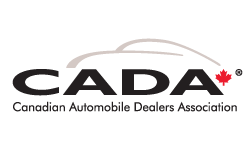For used car shoppers in British Columbia, recent natural disasters south of the border spell another concern to be aware of – an influx of flood-damaged vehicles entering the market.
Used car shoppers in North America are being urged by consumer protection agencies to be extra vigilant and alert, especially after the wake of Hurricanes Harvey and Irma.
While the proper protocol for vehicles with extensive flood damage is a one-way trip to the junkyard, the reality is that many of these vehicles end up being transported to areas as far as Canada where there are more unsuspecting consumers.
A Consumer Reports investigation is warning people especially about “rebuilt wrecks,” where some of the flood damaged vehicles are reborn, with clean titles, and are restored to look like any other used car.
When insurers declare that a car is a total loss, that car is usually branded with the word “salvage” or “flood” and sold off to salvage auctions, but what the investigation found is that this information sometimes isn’t properly communicated (with varying degrees of transparency required between States) and instead, is completely wiped off to mislead the potential buyer.
A flood-damaged vehicle spells disaster for a driver in a number of ways. For one, the damage from flooding may take months to manifest, and the ways it affects the vehicle is unpredictable.
Water can cause rust and corrosion, and the level of corrosion can vary, depending on the salt content of the water. A deep submersion can ruin electric components and lead to potentially dangerous operational issues.
Flood damage can also affect safety features by preventing airbags from deploying and causing transmission failure. Water can ruin lubricants, mechanics, and the list is endless – water can affect almost every component of the vehicle.
Furthermore, the mildew and mold that can develop in these vehicles can trigger allergic reactions and asthma attacks. In September, it was reported that the floodwater from Houston, Texas was toxic and caused infections in residents and medical professionals.
To avoid purchasing a flood-damaged car, check the vehicle history for any warning signs. But as we noted earlier, titles can easily be ‘washed,’ so either inspect the vehicle, or get a mechanic to inspect the vehicle for any signs of water damage.
Visually, the easiest way to spot water damage would be in the interior of the vehicle. Check the carpets and difficult to clean places for mud or debris. A moldy smell is definitely a red flag. Look at the heads of any unpainted screws for signs of rust. Also look for signs of condensation behind the headlights.
To an untrained eye, it might be hard to spot the signs of a flood-damaged car. A flood damaged vehicle could lead to trouble down the road and if you’re unsure about how to spot the signs, it may be better to leave it to the experts. The best way to avoid purchasing a faulty vehicle is to purchase from a reputable dealer and be weary of pushy independent sellers with used vehicles priced well below the market value.
Auto Note: A recent ICBC survey revealed that nine out of ten drivers worry about hitting pedestrians at night and during wet weather. Eight out of ten pedestrians don’t feel safe during bad weather conditions. Be extra alert at intersections and put your phone away when you’re driving, especially during our wet and darker days.
Blair Qualey is President and CEO of the New Car Dealers Association of BC. You can email him at [email protected].









